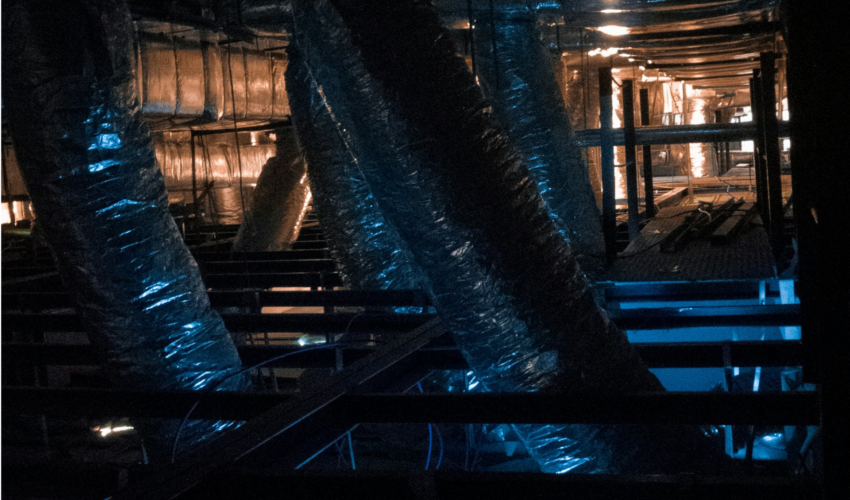If you’ve ever spent time in a restaurant or event center that features exposed ductwork, you probably already know that some metal ducts are not insulated and instead exist entirely within the air-conditioned space. But while non-insulated ductwork can be fairly common—whether for the aesthetic or otherwise—insulation plays a key role in maximizing the efficiency of your HVAC unit.
Below, we discuss the ins and outs of duct wrap, duct lining, and their impact on your HVAC system.
Why is Duct Insulation Necessary?
Duct insulation is not an option or upgrade, just a necessary part of certain metal duct systems. If you have metal ducting outside a conditioned space, it should be insulated. There are two main ways to do this: wrap (outside) or lining (inside). If your ducts aren’t insulated, they’ll lose heat in the winter and cool air in the summer, forcing your HVAC system to work harder and ultimately shortening its lifespan. What’s more, poorly-insulated metal ducts will allow condensation to form, which can drip on the ceiling and lead to rust and damage.
What is Duct Lining?
Duct lining coats the inside of the duct and is most commonly used on ducting that is exposed to weather. Because this lining cannot be replaced easily, and sometimes not at all, duct lining tends to be inferior to duct wrap.
What is Duct Wrap?
As mentioned above, one of the benefits of wrapped ducts is that they can be rewrapped if the wrap becomes compromised. Duct wrap may need to be repaired or replaced if the insulation shrinks due to age or becomes damaged over time from foot traffic of service workers in the crawlspace, severe weather such as flooding, or even animals. Wrapping ducts is labor-intensive, which means it can be expensive.
Expenses like these often make people wonder whether they should consider duct replacement options instead. If your duct system is well-designed, there’s never a reason to choose duct replacement over re-wrapping. Metal ductwork is ideal—it lasts more than a lifetime, has less friction than other ducting materials and cannot be easily damaged.
When Should You Investigate Your Other Options?
In some cases, a poor duct design will require you to replace your ductwork. These poor designs are most common in houses built between the late 1940s and the late 1960s—at this time, sheet metal was the only material used in ducting, air conditioning was optional, and duct design left much to be desired.
During the earliest days of air conditioning, any cooled air in any part of the home was seen as amazing and cutting-edge, so “hot spots” were not a topic of conversation. As a result, many metal systems installed during this time period have poor air distribution. This effect is even more pronounced today with the massive improvements in HVAC technology. In these cases, it may make sense to replace your metal ductwork instead. There are several modern, inexpensive options available that are less labor-intensive than trying to wrap poorly-designed metal ducts.
If you’re in the San Antonio area and concerned about your ductwork, get a professional opinion and give North East Air Conditioning, Heating & Plumbing a call. We’ll make sure your ductwork is properly insulated and help your system keep the cool air coming all summer long.


